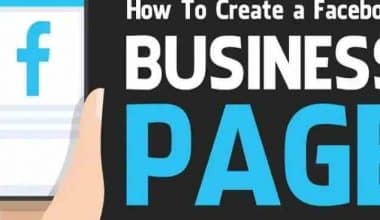There are times when competitor intelligence feels more like a chore than a necessary part of doing business. You may look at market research, customer relationship management information, and perhaps even the websites and social media profiles of your main competitors. You can use this information to make battle cards for your sales staff, which you can update annually. Strong competitive marketing intelligence, however, is more than just ticking a box; it may have a lasting impact on a company’s marketing and communications strategy. In this article, we explained how to carry out a successful competitor intelligence report with examples. We also added a list of competitor intelligence tools that will make the research easier for you to carry out.
What Is Competitor Intelligence?
Competitor intelligence, by definition, is a compilation of useful data culled effectively and morally from a wide variety of public and private sources. Successful use of competitor intelligence requires an organization to have a complete picture of the market in order to solve problems and address threats before they even occur.
Knowing your competition goes beyond the old adage, “Know your enemy.” Instead, it’s a thorough investigation of the competitors’ operations, products, and markets that helps organizations better understand their competition. The impact of several factors on competitors is also analyzed by competitive intelligence agencies. This not only discloses potential effects on distributors and other stakeholders but also foreshadows how rapidly assumptions might be rendered obsolete by advances in technology.
The term “competitor intelligence” can have a variety of interpretations within a company. To a salesperson, it could mean receiving strategic guidance on how to compete for a high-paying deal, for instance. For upper management, this could entail developing novel marketing insights to increase market share in the face of a difficult rival.
Types of Competitors
There are 3 types of competitors to put into consideration when conducting competitor intelligence. Here are the 3 types of competitors:
#1. Direct Competitors
The term “direct competitor” refers to a company that offers products or services that are identical to or very similar to your own, and which also aims to attract the same clientele. Your direct competitor at a lemonade stand will be the neighboring stands. Google Chrome is a direct competitor to Microsoft’s Edge browser.
Direct competitors provide an obvious risk, as customers who buy from them are unlikely to return for more of what they’ve already purchased. Someone who purchases an Apple smartphone is not likely to switch to Samsung.
#2. Indirect Competitors
Indirect competitors are those who offer the same or comparable goods and services as your company, but for whom this is not their major source of income or key area of emphasis. Your next-door neighbor could start a company selling umbrellas, sunscreen, and hats in addition to lemonade if you still run your lemonade stand.
A car dealership’s service department may offer the same services as a local independent garage, but the dealership’s primary focus is on selling vehicles, not on repairing them. Because of this, a consumer at an indirect competitor can still be a customer of yours, but only if you effectively market to them.
#3. Replacement Competitors
Competitors in the market for a suitable replacement may provide goods and services that are comparable to or distinct from your own, but which address the same needs. A replacement rival can be the most dangerous because they are difficult to detect. It’s not the items or services themselves that shift, but rather the method of distribution.
Consider Blockbuster; the corporation missed Netflix as a direct competitor and a potential substitute. Netflix was in direct competition with Blockbuster because both companies offered movie rentals; however, Netflix differentiated itself by offering its service exclusively through the mail, providing users with a new and more convenient option for getting their movie fix. Since replacement competitors typically disrupt the entire ecosystem, the ease of acquiring a rental through the mail and not having to worry about late penalties left Blockbuster playing catch-up.
Competitor Intelligence Tools
There are different types of competitor intelligence tools you can make use of when conducting competitor intelligence. Here are some of the competitor intelligence tools you can go for:
#1. Ahrefs
It’s not the only thing you can do using Ahrefs. It’s a robust system for gathering information about the competition. Competitor intelligence is further aided by their batch analysis tool, which reveals information such as domain authority, referring domain count, predicted organic search traffic, and keyword ranks. With Ahrefs Site Explorer, you can see how your online content strategy stacks up in terms of backlink growth. It is one of the best competitor intelligence tools you can opt for.
#2. RivalIQ
Using a competitive intelligence tool like RivalIQ, you may gain valuable insight into how your rivals are performing in key areas like social media, web design, and search engine optimization. You can establish “Landscapes” within the RivalIQ interface to compare your website to that of multiple competitors.
The social media analytic features of this product are where they really shine. You can see which platforms your competitors are using, how rapidly they are gaining new followers, how engaged their audience is, and which of their postings relied on bought traffic by using this platform. All the data you need to turbocharge your own social media campaigns is right here. When you know what’s working in your industry, you can increase your focus on it and make smarter PPC spending selections.
#3. G2
Yelp and Google Reviews are crucial if you run a restaurant. The G2 peer-to-peer software review platform fills a similar void for the software industry. You can assess how you stack up against the competition in your industry by doing a simple search. G2 stores a lot of competitive intelligence data, including details on markets, industries, and user personas. It is one of the best competitor intelligence tools you can go for.
#4. SEMrush
SEMrush is widely recognized as a top keyword research tool on the web. You can use it to research the keywords, backlinks, and traffic sources that have proven successful for both your business and your competition. When it comes to monitoring your competition in both paid and organic search, SEMRush is an invaluable resource.
You can learn about the organic keywords and paid search campaigns your rivals are focusing on. By studying the organic and paid keyword strategies of your competitors, you may figure out which ones will be most effective for you to adopt. This will not only save you a great deal of time, but it will also help you piece together your competition’s digital marketing approach, allowing you to better compete with them.
Moreover, SEMRush allows you to build up a dashboard tracking your progress and the development of your competitors, so you can ensure that you are keeping up with (or even surpassing) their results.
#5. Craft.co
Even though Craft.co is primarily used to assess the threat posed by suppliers, it also provides valuable insights into the strategies of competitors. It is one of the best competitor intelligence tools you can go for. The software provides real-time access to HR, financial, and operational data. Everything you need to know, from their physical locations and stock price to their most recent press releases, is at your fingertips.
#6. Crunchbase
Crunchbase is a database that contains details about both publicly traded and privately held businesses. They provide a wealth of information, including everything from the company’s origins and leadership to its finances and beyond.
You can use Crunchbase to learn about investment opportunities, conduct market research, monitor industry trends, and gain a better understanding of the factors that impact other businesses in your field. This tool is excellent for salespeople seeking potential leads, business owners looking to increase their funding, market analysts, and investors.
#7. Ghostery
Ghostery is a browser add-on that improves the browsing experience by identifying and blocking tracking technologies used by third parties. In addition to helping you learn more about your competition, this tool can reveal the specific pixels and web tags being used by their website. A company’s marketing methods can be deduced from the data they collect from their customers.
Ghostery offers a suite of products, each of which delves more into the study of the competition. Their Insights offering, for instance, gives you access to not only the pixels and web tags of your competitors but also to all of their third-party tracking tools and statistics.
#8. SimilarWeb
SimilarWeb is a tool for analyzing website traffic and marketing strategies. Engagement, reach, worldwide rank, traffic sources, social metrics, and paid traffic are just some of the indicators that may be analyzed. The ability to directly compare two or more websites is what sets SimilarWeb apart from other traffic analysis tools. Easily compare your metrics to those of a wide range of rivals.
Marketing plans, sales funnel enhancements, and investor assessments can all benefit greatly from using Similar Web. Similar Web is a fantastic choice if you need assistance with any of these tasks. It is one of the competitor intelligence tools you can go for.
Tips for Conducting a Competitor Intelligence Report
A well-thought-out approach can make the process of implementing a competitor intelligence strategy much less onerous. There are measures you may take to launch a successful competitor intelligence report. The following are the tips you can make use of to give a great competitor intelligence report:
#1. Find Out Who You’re Up Against
Finding out who you’re up against will surely help with your competitor intelligence report. While it may be tempting to maintain tabs on everyone who might pose a threat to your business, your competitive intelligence efforts will be more fruitful if you narrow in on a select few. Focus on the top two or three rivals and forget the rest.
Whoever your ideal customer would go with if they didn’t go with you is your top rival. These businesses will share a lot of characteristics, including a dominant market share and similar products and services. Keep in mind that your primary rival is not the largest company in the industry. You face your greatest danger from this.
#2. Set Your Goals
You may use information about your competitors to improve every facet of your company. But if you cast too wide a net, you won’t find any relevant information. Select a few key areas to focus on as a starting point for your plan. Do you wish to improve your advertising strategies? Is the development of novel features and products a priority for you? Is it time to revise your approach to making sales? When you have something specific in mind, you know exactly where you need to go in-depth and where you can get away with skimming the surface.
#3. Gather Your Sources
You can gather competitive intelligence from any information your rivals release to the public. Therefore, not all information is the same. There will be too much data for you to act on if you don’t sort it first. Consider again the targets you established in the prior stage. Find information that will help you accomplish your aims. Look at your competitor’s websites, social media accounts, white papers, and advertisements to get ideas for how to improve your own marketing. While resources like job descriptions are useful, they may not provide all the answers.
#4. Create a Culture of Competitor Intelligence
Competitor intelligence is everyone’s responsibility. The consideration of rival strategies in your group’s decision-making processes is expected and should be treated as routine. Initiate regular communication of competitive intelligence. Share regular updates on the state of the industry and make sure all departments are aware of any big changes made by your competition. Make casual reference to the results of your competitive intelligence studies. It will become second nature for your staff to routinely consult competitive intelligence data.
Competitor Intelligence Examples
The following are some competitor intelligence examples that will help you to conduct perfect competitor intelligence research:
#1. Positioning Or Messaging Changes
Keeping abreast of these shifts can give you insight into how rival firms are placing a monetary value on their products and services. In doing so, you may set your offering apart from the competition. By doing so, your sales and support teams may solve their clients’ pain areas, overcome their objections, and win over new customers. Your marketing department will also need to make adjustments to the product and service positioning, as well as the overall company positioning, in light of these findings.
Share findings quickly with the Customer Service, Marketing, and Sales departments. The longer you wait, the greater the possibility that you may be caught off guard. Your sales staff may miss out on deals, your customer service department may have a difficult time convincing or assisting consumers, and your marketing department may have trouble fighting back in the future.
#2. Leadership/C-Suite Changes
A change in strategy can be as simple as a new chief executive joining or leaving a competitor’s company. It could be a chance for you to take advantage of the situation, if a key leader from your competitor group has been eliminated, or a threat if a new leader has entered the fray. You should always be ready for the unexpected. The appropriate response to competitive intelligence on leadership shifts is context-specific and calls for careful consideration. You should actively provide your sales team with the information they need to close more deals if new leadership has been added, such as a vice president of sales.
Your sales staff should be concentrating on new customer acquisition as well as up-selling and cross-selling to existing clients in light of the fact that your competitor has hired a new vice president of sales. However, if there has been a departure from your competitors’ companies, such as the VP’s resignation, this could indicate that the company has switched its focus from a certain region, signaling that now is the time to launch your most effective plans. In these situations, it is crucial that your company’s leadership receive intelligence in the form of daily updates, newsletters, and alerts so that they can provide high-level strategic updates to your sales teams.
#3. Pricing Changes
For promotional purposes, rivals will occasionally alter their prices. It is a reality that even if you offer a greater product or service, clients will react negatively to a price decrease. Therefore, monitoring these shifts is crucial. In order to overcome objections raised by prospects and customers, sales and customer service teams need this information. If they have the facts, they can more convincingly discuss the product’s return on investment. The marketing department can’t develop a strategy to oppose the competition’s move without this information. The product planning group will utilize these findings in their quest to identify cost-cutting measures. Such insights are critical and should be shared promptly with the relevant parties.
#4. Competitors’ News
Keeping tabs on the press coverage of your competitors might provide you insight into their operations. You may use both good and bad news to your advantage when developing plans and engaging with clients, consumers, and potential new ones. Imagine your rival has formed a strategic alliance with a rival company in an effort to boost its production. Either your product strategy or the product itself will need updating shortly. However, you may use bad news to your advantage by using it as evidence of your superiority, whether it’s about faulty products, wage cuts, or a data breach. Your leadership and product teams need to receive competitive intelligence, and all of your teams and stakeholders, from product management to marketing to sales to customer success, should have access to the same information so that they can use it to their advantage.
Immediate action is required to capitalize on negative media attention, while countermeasures to positive publicity will require careful planning and preparation. Don’t stop studying the competition and the market until you’ve found the proper time and approach.
Why Is Competitor Intelligence Important
Everything we do is governed by data. Social listening, purchase history, site activity, and user demographics are all examples of data sources that marketers can utilize to inform their decisions. The proper application of competitive intelligence research has the same significance and power. The following are the importance of competitor intelligence:
#1. Multiply Your Market Understanding
Since market research is something every company does, it’s likely that your rivals know something you don’t. Gain a deeper understanding of your own customers, check your assumptions, and learn something new with the help of competitive intelligence. You can confirm the kind of clients and pain points your rivals are focusing on by analyzing their advertising and product positioning. Check your findings against your own personas and guiding papers like message architecture and value statements to detect gaps and flaws in your plan. This strategy is most fruitful when applied to rivals who target the same types of customers as you.
#2. Create Goals and Targets
The results of your rivals can serve as a yardstick against which you can evaluate your own. Let’s pretend one of your rivals is always posting videos on TikTok. Their interaction rates are indicative of the success you can have with your own content. You can use their research to inform your own approach. And if your rivals are investing heavily in a medium without satisfying returns, study their strategies. If the quality of their posts and strategy is excellent but their results are low, it may not be the best channel for you to use.
#3. Make Informed Decisions
Everyone in your organization can gain something from spying on the competition. Based on the strengths and weaknesses of the competition, sales teams might modify their presentation. Teams can adjust their messaging to better compete with rivals. The product team can plot their course of action to avoid the strengths and weaknesses of the competition. Teams can make better judgments when they have access to reliable and actionable intelligence about their competitors.
What Are Ways That You Can Gather Competitor Intelligence?
- Check any of the product-related pages on your competitors’ websites.
- Purchase competitor products.
- Understand the pricing.
- Keep an eye on product reviews.
- Use competitive intelligence tools.
- Read employee reviews.
- Research LinkedIn.
Is Competitor Intelligence a Skill?
Competitive intelligence, or market research, is the most ubiquitous of all hard skills required of managers. Managers in competitive intelligence make up 9.7 percent of the workforce. 9.1% of managers include competitive intelligence as a required hard skill on their resume.
What Is a Competitor Intelligence Strategy?
Intelligence gathered and analyzed by a corporation regarding its industry, business environment, rivals, and goods with the intention of shaping future strategy is known as competitive intelligence (CI) or competitor intelligence.
Which Is the Best Way to Perform Competitor Intelligence?
- Identify your competitors.
- Set your goals.
- Gather your sources.
- Create a culture of competitive intelligence.
Final Thoughts
Having access to competitive intelligence can mean the difference between achieving and exceeding quarterly targets. The best strategy to gain ahead is to learn from your competitors’ mistakes and improve your own methods at the same time. Are you prepared to find out what your rivals and potential customers are saying? Social listening is a great way to keep up with the latest trends.
Related Articles
- COMPETITOR: Meaning, Example, Analysis, Types & Advantages
- COMPETITOR WEBSITE ANALYSIS: Top 10+ Web Analytic Free Tools in 2023
- COMPETITORS IN BUSINESS: Definition, Types, Analysis, Benefits & How to Deal With It
- Competitor Analysis: All you need (+ How to Start Guide)
- Competitive Analysis: Meaning, How to Write One and Examples






